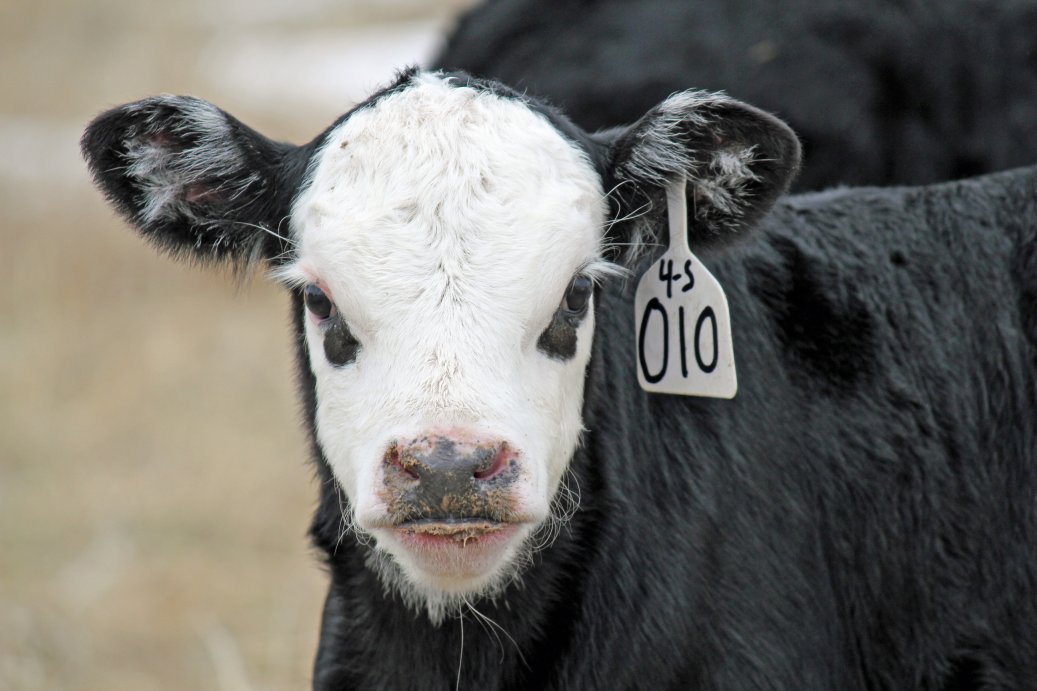Karla H. Wilke, UNL Cow/Calf Systems and Stocker Management

Listen to a discussion of the content in this article on this episode of the BeefWatch podcast. You can subscribe to new episodes in iTunes or paste http://feeds.feedburner.com/unlbeefwatch into your podcast app.
Early weaning is typically defined as weaning before calves are 150 days of age. In extreme cases beef calves may be weaned at 45 days of age, but more commonly early weaned calves are over 90 days of age. Early weaning may be advantageous in times of drought, when cows are in a confinement system, or as a body condition management tool for very young or old cows. Once weaning has occurred, the cow, now without the demands of lactation, can be maintained on poor quality forage and little to no supplement. Higher quality feed, which may be in limited supply, can be reserved for the rapidly growing calf.
Nutrition
Milk is a great source of nutrition for the young calf. With the removal of milk in the diet through weaning, another source of high quality nutrition needs to be provided if the same level of daily gain is desired. Although young beef calves begin eating solid food by 30 days of age, the rumen is still small in the young calf. Therefore, a nutrient dense, highly digestible diet with a fast passage rate will allow the calf to consume, digest, and absorb the nutrients needed. Diets containing residues or low quality hay which are often poorly digested, slow the rate of passage through the digestive tract and therefore, limit intake, which in turn can limit gain. A mature cow has a large rumen and has the potential to consume enough low quality feed to meet her needs in most cases. A young calf needs to be able to eat small frequent meals, as the rumen is so much smaller.
Because milk bypasses the rumen and goes straight to the abomasum via closure of the esophageal groove, it is a very digestible source of protein and energy, available to the animal for bone and muscle growth, as opposed to being available as a nitrogen source for the microbial population in the rumen. Supplementing a protein source that is not easily digested by the microbes and is then available at the tissue level can help support gain without the calves depositing fat instead of lean growth. Distillers grains, a by-product of the ethanol industry is an example of a protein supplement that is a good source of rumen undegradable protein for the young growing calf.
An example diet for a 300-pound calf that would support 2.0 pounds/day gain would be 3 pounds of dried distillers and 7 pounds of a 50:50 blend of oat hay and alfalfa. Zinc and copper are very important minerals for boosting immunity so providing a good vitamin and trace mineral package free choice or in a total mixed ration is important to the young calf as well. Water is also important for the health and wellbeing of the calf and should be clean and accessible at all times.
Management
Providing at least 12 inches of bunk or feeding space per calf allows all the calves access to feed without overcrowding. The early weaned calf is likely smaller than traditionally weaned calves, so making sure the calf can reach the feed in the bunk is critical. This is also true of the water tank. Making sure the tank is banked well, and the tank fills to the edge quickly so calves always have reachable water is critically important. After weaning, the goal is to increase feed intake as quickly as possible. However, without adequate water access, this process is delayed, as is nutrient intake, which can lead to depressed immunity and growth.
Determining that the pen and bunk line will effectively contain bawling, pacing lightweight calves before weaning will alleviate some headaches later. A pen that traditionally holds 500-700 pound calves may not contain a 300-pound calf as well. Fenceline weaning, where cows are on one side, and calves on the other, may also be a bit more challenging with the smaller calf who may be able to crawl through the fence.
Space to spread out in a clean pen can also help prevent post-weaning illness. Producers should also visit with their local veterinarian about vaccination schedules and protocols that would be most effective for the early weaned calf as well as developing a protocol for treating illness if it occurs, well before weaning takes place.
Marketing
Even with a price slide for lighter weight calves, the early weaned calf will usually not bring as much as a calf at a traditional weaning weight. Fortunately, these young calves are very efficient and with proper nutrition can gain as well or better than calves left to nurse the cow. Evaluating the cost of feed and the predicted value of the calf are critical, especially if early weaning is due to drought, as harvested feed resources are typically expensive in those situations.
Once weaned, these calves may fit well in an annual forage grazing backgrounding program. Additionally, after a short growing period (approximately 90 days) these calves may be put on a finishing diet. They traditionally are very efficient during the finishing phase and have a high percentage of upper 2/3 choice carcasses. However, as stated earlier, feed and labor costs should be evaluated against the predicted value of the calves at each marketing point.
Early weaning is a strategy that can be advantageous in several scenarios. Feeding, management, and marketing needs to be evaluated prior to weaning so the best options as well as best management practices are selected. For more information on weaning calves, producers can access NebGuide G2047 Management of Early Weaned Calves or NebGuide G2057 Management, Health, and Nutritional Considerations for Weaned Calves. These can also be found at https://extensionpubs.unl.edu.
Interviews with the authors of BeefWatch newsletter articles become available throughout the month of publication and are accessible at https://go.unl.edu/podcast.
